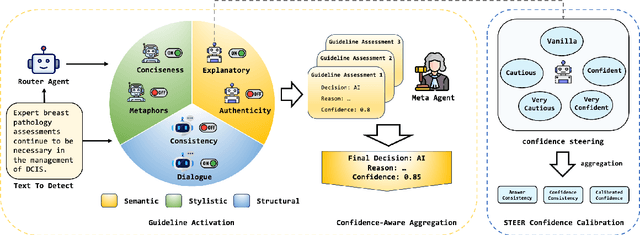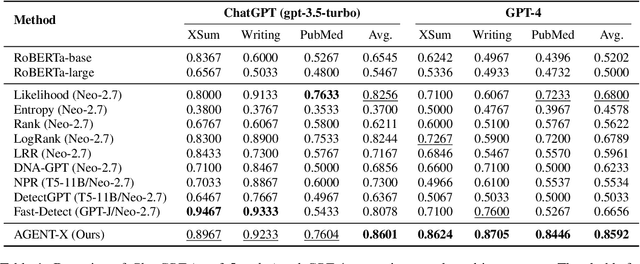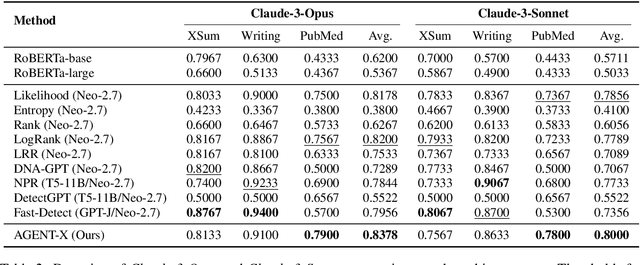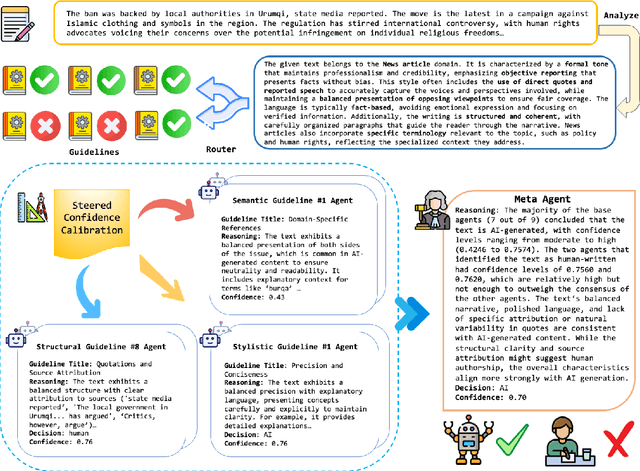Cheng Peng
Detail Across Scales: Multi-Scale Enhancement for Full Spectrum Neural Representations
Sep 19, 2025Abstract:Implicit neural representations (INRs) have emerged as a compact and parametric alternative to discrete array-based data representations, encoding information directly in neural network weights to enable resolution-independent representation and memory efficiency. However, existing INR approaches, when constrained to compact network sizes, struggle to faithfully represent the multi-scale structures, high-frequency information, and fine textures that characterize the majority of scientific datasets. To address this limitation, we propose WIEN-INR, a wavelet-informed implicit neural representation that distributes modeling across different resolution scales and employs a specialized kernel network at the finest scale to recover subtle details. This multi-scale architecture allows for the use of smaller networks to retain the full spectrum of information while preserving the training efficiency and reducing storage cost. Through extensive experiments on diverse scientific datasets spanning different scales and structural complexities, WIEN-INR achieves superior reconstruction fidelity while maintaining a compact model size. These results demonstrate WIEN-INR as a practical neural representation framework for high-fidelity scientific data encoding, extending the applicability of INRs to domains where efficient preservation of fine detail is essential.
MS-GS: Multi-Appearance Sparse-View 3D Gaussian Splatting in the Wild
Sep 19, 2025Abstract:In-the-wild photo collections often contain limited volumes of imagery and exhibit multiple appearances, e.g., taken at different times of day or seasons, posing significant challenges to scene reconstruction and novel view synthesis. Although recent adaptations of Neural Radiance Field (NeRF) and 3D Gaussian Splatting (3DGS) have improved in these areas, they tend to oversmooth and are prone to overfitting. In this paper, we present MS-GS, a novel framework designed with Multi-appearance capabilities in Sparse-view scenarios using 3DGS. To address the lack of support due to sparse initializations, our approach is built on the geometric priors elicited from monocular depth estimations. The key lies in extracting and utilizing local semantic regions with a Structure-from-Motion (SfM) points anchored algorithm for reliable alignment and geometry cues. Then, to introduce multi-view constraints, we propose a series of geometry-guided supervision at virtual views in a fine-grained and coarse scheme to encourage 3D consistency and reduce overfitting. We also introduce a dataset and an in-the-wild experiment setting to set up more realistic benchmarks. We demonstrate that MS-GS achieves photorealistic renderings under various challenging sparse-view and multi-appearance conditions and outperforms existing approaches significantly across different datasets.
A Study of Large Language Models for Patient Information Extraction: Model Architecture, Fine-Tuning Strategy, and Multi-task Instruction Tuning
Sep 05, 2025



Abstract:Natural language processing (NLP) is a key technology to extract important patient information from clinical narratives to support healthcare applications. The rapid development of large language models (LLMs) has revolutionized many NLP tasks in the clinical domain, yet their optimal use in patient information extraction tasks requires further exploration. This study examines LLMs' effectiveness in patient information extraction, focusing on LLM architectures, fine-tuning strategies, and multi-task instruction tuning techniques for developing robust and generalizable patient information extraction systems. This study aims to explore key concepts of using LLMs for clinical concept and relation extraction tasks, including: (1) encoder-only or decoder-only LLMs, (2) prompt-based parameter-efficient fine-tuning (PEFT) algorithms, and (3) multi-task instruction tuning on few-shot learning performance. We benchmarked a suite of LLMs, including encoder-based LLMs (BERT, GatorTron) and decoder-based LLMs (GatorTronGPT, Llama 3.1, GatorTronLlama), across five datasets. We compared traditional full-size fine-tuning and prompt-based PEFT. We explored a multi-task instruction tuning framework that combines both tasks across four datasets to evaluate the zero-shot and few-shot learning performance using the leave-one-dataset-out strategy.
Parametric Gaussian Human Model: Generalizable Prior for Efficient and Realistic Human Avatar Modeling
Jun 07, 2025Abstract:Photorealistic and animatable human avatars are a key enabler for virtual/augmented reality, telepresence, and digital entertainment. While recent advances in 3D Gaussian Splatting (3DGS) have greatly improved rendering quality and efficiency, existing methods still face fundamental challenges, including time-consuming per-subject optimization and poor generalization under sparse monocular inputs. In this work, we present the Parametric Gaussian Human Model (PGHM), a generalizable and efficient framework that integrates human priors into 3DGS for fast and high-fidelity avatar reconstruction from monocular videos. PGHM introduces two core components: (1) a UV-aligned latent identity map that compactly encodes subject-specific geometry and appearance into a learnable feature tensor; and (2) a disentangled Multi-Head U-Net that predicts Gaussian attributes by decomposing static, pose-dependent, and view-dependent components via conditioned decoders. This design enables robust rendering quality under challenging poses and viewpoints, while allowing efficient subject adaptation without requiring multi-view capture or long optimization time. Experiments show that PGHM is significantly more efficient than optimization-from-scratch methods, requiring only approximately 20 minutes per subject to produce avatars with comparable visual quality, thereby demonstrating its practical applicability for real-world monocular avatar creation.
Harnessing Negative Signals: Reinforcement Distillation from Teacher Data for LLM Reasoning
May 30, 2025Abstract:Recent advances in model distillation demonstrate that data from advanced reasoning models (e.g., DeepSeek-R1, OpenAI's o1) can effectively transfer complex reasoning abilities to smaller, efficient student models. However, standard practices employ rejection sampling, discarding incorrect reasoning examples -- valuable, yet often underutilized data. This paper addresses the critical question: How can both positive and negative distilled reasoning traces be effectively leveraged to maximize LLM reasoning performance in an offline setting? To this end, We propose Reinforcement Distillation (REDI), a two-stage framework. Stage 1 learns from positive traces via Supervised Fine-Tuning (SFT). Stage 2 further refines the model using both positive and negative traces through our proposed REDI objective. This novel objective is a simple, reference-free loss function that outperforms established methods like DPO and SimPO in this distillation context. Our empirical evaluations demonstrate REDI's superiority over baseline Rejection Sampling SFT or SFT combined with DPO/SimPO on mathematical reasoning tasks. Notably, the Qwen-REDI-1.5B model, post-trained on just 131k positive and negative examples from the open Open-R1 dataset, achieves an 83.1% score on MATH-500 (pass@1). Its performance matches or surpasses that of DeepSeek-R1-Distill-Qwen-1.5B (a model post-trained on 800k proprietary data) across various mathematical reasoning benchmarks, establishing a new state-of-the-art for 1.5B models post-trained offline with openly available data.
Scaling Up Biomedical Vision-Language Models: Fine-Tuning, Instruction Tuning, and Multi-Modal Learning
May 23, 2025Abstract:To advance biomedical vison-language model capabilities through scaling up, fine-tuning, and instruction tuning, develop vision-language models with improved performance in handling long text, explore strategies to efficiently adopt vision language models for diverse multi-modal biomedical tasks, and examine the zero-shot learning performance. We developed two biomedical vision language models, BiomedGPT-Large and BiomedGPT-XLarge, based on an encoder-decoder-based transformer architecture. We fine-tuned the two models on 23 benchmark datasets from 6 multi-modal biomedical tasks including one image-only task (image classification), three language-only tasks (text understanding, text summarization and question answering), and two vision-language tasks (visual question answering and image captioning). We compared the developed scaled models with our previous BiomedGPT-Base model and existing prestigious models reported in the literature. We instruction-tuned the two models using a large-scale multi-modal biomedical instruction-tuning dataset and assessed the zero-shot learning performance and alignment accuracy.
AGENT-X: Adaptive Guideline-based Expert Network for Threshold-free AI-generated teXt detection
May 21, 2025



Abstract:Existing AI-generated text detection methods heavily depend on large annotated datasets and external threshold tuning, restricting interpretability, adaptability, and zero-shot effectiveness. To address these limitations, we propose AGENT-X, a zero-shot multi-agent framework informed by classical rhetoric and systemic functional linguistics. Specifically, we organize detection guidelines into semantic, stylistic, and structural dimensions, each independently evaluated by specialized linguistic agents that provide explicit reasoning and robust calibrated confidence via semantic steering. A meta agent integrates these assessments through confidence-aware aggregation, enabling threshold-free, interpretable classification. Additionally, an adaptive Mixture-of-Agent router dynamically selects guidelines based on inferred textual characteristics. Experiments on diverse datasets demonstrate that AGENT-X substantially surpasses state-of-the-art supervised and zero-shot approaches in accuracy, interpretability, and generalization.
Bounding Neyman-Pearson Region with $f$-Divergences
May 13, 2025Abstract:The Neyman-Pearson region of a simple binary hypothesis testing is the set of points whose coordinates represent the false positive rate and false negative rate of some test. The lower boundary of this region is given by the Neyman-Pearson lemma, and is up to a coordinate change, equivalent to the optimal ROC curve. We establish a novel lower bound for the boundary in terms of any $f$-divergence. Since the bound generated by hockey-stick $f$-divergences characterizes the Neyman-Pearson boundary, this bound is best possible. In the case of KL divergence, this bound improves Pinsker's inequality. Furthermore, we obtain a closed-form refined upper bound for the Neyman-Pearson boundary in terms of the Chernoff $\alpha$-coefficient. Finally, we present methods for constructing pairs of distributions that can approximately or exactly realize any given Neyman-Pearson boundary.
Natural Language Generation in Healthcare: A Review of Methods and Applications
May 07, 2025Abstract:Natural language generation (NLG) is the key technology to achieve generative artificial intelligence (AI). With the breakthroughs in large language models (LLMs), NLG has been widely used in various medical applications, demonstrating the potential to enhance clinical workflows, support clinical decision-making, and improve clinical documentation. Heterogeneous and diverse medical data modalities, such as medical text, images, and knowledge bases, are utilized in NLG. Researchers have proposed many generative models and applied them in a number of healthcare applications. There is a need for a comprehensive review of NLG methods and applications in the medical domain. In this study, we systematically reviewed 113 scientific publications from a total of 3,988 NLG-related articles identified using a literature search, focusing on data modality, model architecture, clinical applications, and evaluation methods. Following PRISMA (Preferred Reporting Items for Systematic reviews and Meta-Analyses) guidelines, we categorize key methods, identify clinical applications, and assess their capabilities, limitations, and emerging challenges. This timely review covers the key NLG technologies and medical applications and provides valuable insights for future studies to leverage NLG to transform medical discovery and healthcare.
Unconstrained Large-scale 3D Reconstruction and Rendering across Altitudes
Apr 29, 2025Abstract:Production of photorealistic, navigable 3D site models requires a large volume of carefully collected images that are often unavailable to first responders for disaster relief or law enforcement. Real-world challenges include limited numbers of images, heterogeneous unposed cameras, inconsistent lighting, and extreme viewpoint differences for images collected from varying altitudes. To promote research aimed at addressing these challenges, we have developed the first public benchmark dataset for 3D reconstruction and novel view synthesis based on multiple calibrated ground-level, security-level, and airborne cameras. We present datasets that pose real-world challenges, independently evaluate calibration of unposed cameras and quality of novel rendered views, demonstrate baseline performance using recent state-of-practice methods, and identify challenges for further research.
 Add to Chrome
Add to Chrome Add to Firefox
Add to Firefox Add to Edge
Add to Edge